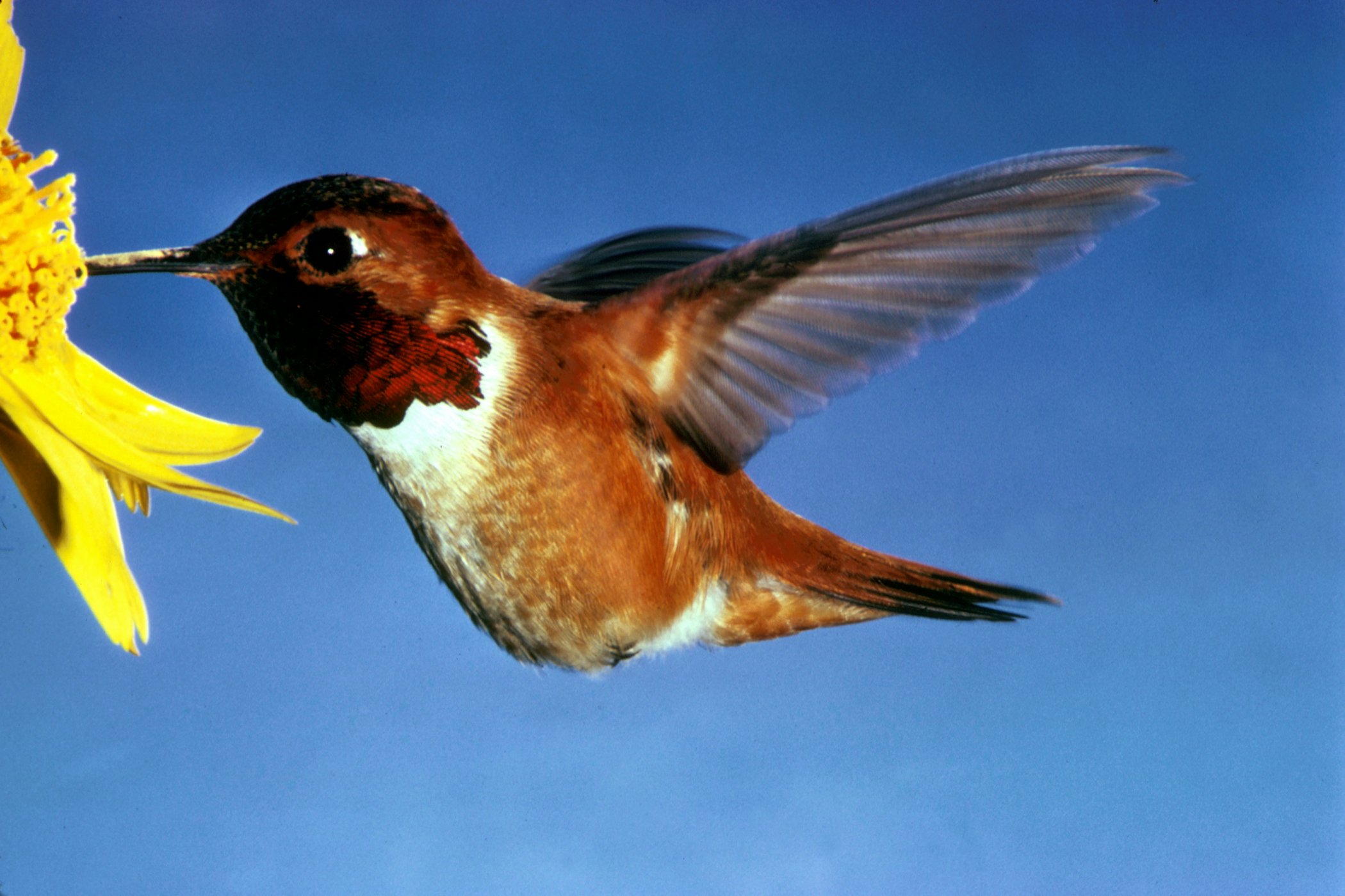- Rufous Hummingbird
Taxobox
name = Rufous Hummingbird
status = LC
status_system = iucn3.1

image_width = 240px
image_caption = Adult male
regnum =Animal ia
phylum = Chordata
classis =Aves
ordo =Trochiliformes
familia =Trochilidae
genus = "Selasphorus "
species = "S. rufus"
binomial = "Selasphorus rufus"
binomial_authority = (Gmelin,1788 )The Rufous Hummingbird ("Selasphorus rufus") is a small
hummingbird , about 8 cm long with a long, straight and very slender bill. The female is slightly larger than the male.The adult male, shown in the photo, has a white breast, rufous face, upperparts, flanks and tail and an iridescent orange-red throat patch (gorget). Some males have some green on back and/or crown. The female has green upperparts, white underparts, some iridescent orange
feather s in the center of the throat, and a dark tail with white tips and rufous base. Females and the rare green-backed males are extremely difficult to differentiate fromAllen's Hummingbird .Their breeding habitat is open areas and forest edges in western
North America from southernAlaska toCalifornia . This bird nests further north than any other hummingbird. The female builds a nest in a protected location in a shrub orconifer . The male aggressively defends feeding locations within his territory. The same male may mate with several females.They are migratory, many of them migrating through the
Rocky Mountains and nearby lowlands in July and August to take advantage of thewildflower season there. They may stay in one spot for considerable time, in which case the migrants, like breeding birds, often aggressively take over and defend feeding locations. Most winter in wooded areas in theMexico state ofGuerrero , traveling over 2,000 miles by an overland route from its nearest summer home—a prodigious journey for a bird weighing only three or four grams.This is the western hummingbird most likely to stray into eastern North America. There has been an increasing trend for them to migrate east to winter in the eastern
United States -(Florida ), rather than inMexico . (They do arrive at theTurks and Caicos Islands .) This trend is the result of increased survival with the provision of artificial feeders ingarden s. In the past, individuals that migrated east in error would usually die, but now they often survive, and their tendency to migrate east is inherited by their offspring. Provided sufficient food and shelter is available, they are surprisingly hardy, able to tolerate temperatures down to at least -20°C.These birds feed on nectar from flowers using a long extendable tongue or catch
insect s on the wing.Because of their small size, they are vulnerable to insect-eating birds and animals. These birds require frequent feeding while active during the day and become torpid at night to conserve energy.
References
* Database entry includes justification for why this species is of least concern
External links
* [http://www.birds.cornell.edu/AllAboutBirds/BirdGuide/Rufous_Hummingbird.html Rufous Hummingbird Species Account] - Cornell Lab of Ornithology
* [http://www.mbr-pwrc.usgs.gov/id/framlst/i4330id.html Rufous Hummingbird "Selasphorus rufous"] - USGS Patuxent Bird Identification InfoCenter
* [http://www.sdakotabirds.com/species/rufous_hummingbird_info.htm Rufous Hummingbird Information and Photos] - South Dakota Birds and Birding
* [http://www.hummingbirdsociety.org/photogallery Photos of this and other Hummingbird Species] - Hummingbird Society
* [http://www.cbc.ca/quirks/media/2005-2006/mp3/qq-2006-03-11c.mp3 Quirks and Quarks show on rufous hummingbird time management abilities (mp3 file)]
* [http://www.bird-stamps.org/cspecies/8633500.htm Stamps] (with RangeMap)
* [http://ibc.hbw.com/ibc/phtml/especie.phtml?idEspecie=3304 Rufous Hummingbird videos] on the Internet Bird Collection
Wikimedia Foundation. 2010.
